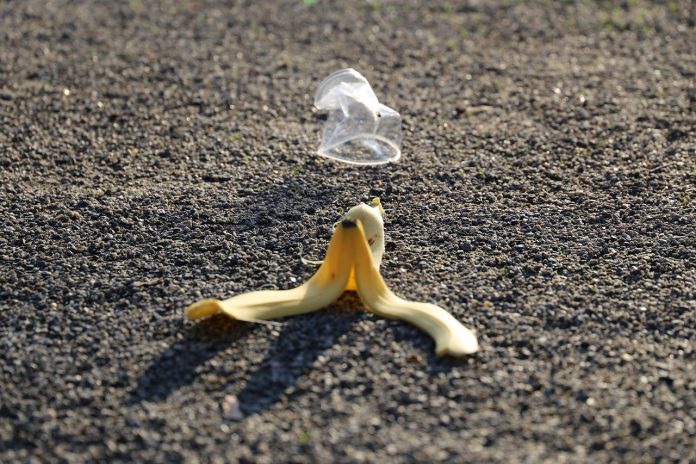COLUMBUS — This sounds more like a dare than research.
Student employees at The Ohio State University willingly don plastic suits and masks to dig into trash and pull out tossed food in its various forms: partly eaten, uneaten, wet and reeking. Then they weigh it.
Not a task for the squeamish, for sure. But apparently the effort to measure and eventually cut food waste on campus somehow outweighs the ickiness of smelling, touching and just standing beside garbage.
“It’s usually fresh garbage which is better than old garbage,” said Mary Leciejewski, who helps organize the food waste audits.
True, but still.
What’s being pitched
Audits of discarded food will help the university work toward diverting 90 percent of food waste from landfills by 2025, one of Ohio State’s Sustainability Goals.
To do this, students and staff are first mapping how much food is brought onto campus and then tossed out at the Wexner Medical Center, the Athletics and Advancement departments and at campus dining facilities.
“Nationally about 20 percent of landfills are occupied by food that was grown at great cost and great resources and transported sometimes thousands of miles only to be put in a landfill where it produces methane,” a powerful greenhouse gas, said Brian Roe, an economics professor in the ag college who leads the Ohio State Food Waste Collaborative.
The collaborative is a collection of researchers, practitioners and students working together to promote the reduction and redirection of food waste.
At the same time that households toss out an average of one-third of the food they bring in, nearly 1 in 7 households in Ohio regularly struggles to pay for balanced meals, Roe added.
“We’re working on ways to improve both problems,” he said.
Soldiers on front line
If you think picking through trash and weighing it seems unconventional, consider the latest effort to help Ohio State cut its food waste: the black soldier fly.
Inside a 45-foot-long shipping container at CFAES’s Waterman Agricultural and Natural Resources Laboratory, a few million black soldier fly larvae will live in stacked boxes feeding off food pitched in campus garbage bins.
“They eat like you wouldn’t believe,” Roe said.
He estimated the flies could save the university $40 to $100 a ton by devouring what’s thrown out. Then the fly larvae can be fed to chickens, pigs and fish.
“I like to think of these black soldier flies as a SWAT team for breaking down food waste. They come in fast. They come in hard. And they get the job done,” said Andrew Jones, a research associate with the Food Waste Collaborative.
The flies are useful only in their larval stage, before they grow wings. After that, they don’t eat much, if anything.
So before the larvae sprout wings, they’ll be collected and sold for animal feed.
Jones, who will be overseeing the flies, filling their trays with discarded food, said he’s unfazed by handling trash and flies much of the day.













